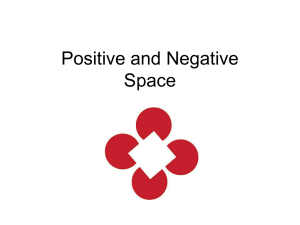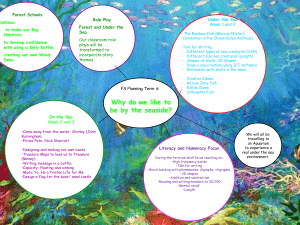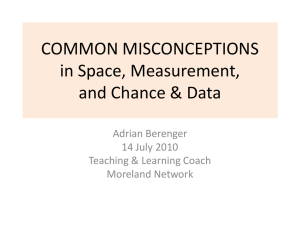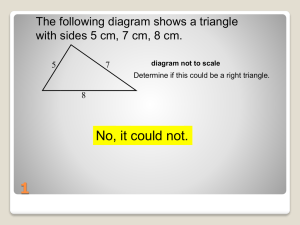Molly Bang`s Picture This: How Pictures Work
advertisement
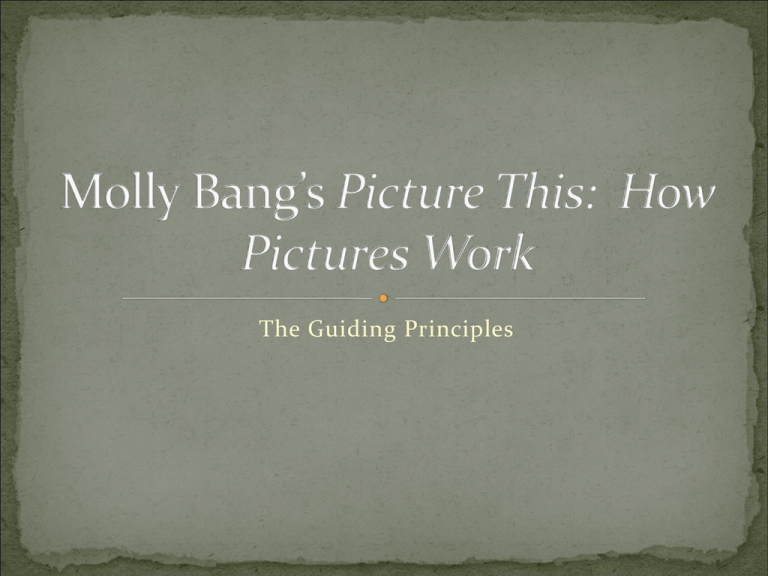
The Guiding Principles Smooth, flat, horizontal shapes give us a sense of stability and calm. We relate horizontal shapes to the surface of the earth or the horizon line. “We humans are most stable when we are horizontal because we can’t fall down” (42). Horizontal shapes also seem stable because they won’t fall down on us, either. “Part of the stability we felt in Little Red Riding Hood as a triangle was due to her wide, flat, horizaontal base. “Vertical shapes are more exciting and more active. Vertical shapes rebel against the earth’s gravity. They imply energy and a reaching toward heights or the heavens” (44). “If a horizontal bar is placed across a row of verticals, stability reigns again…. The sense of vitality and reaching towards the heavens has been checked” (45) “Diagonal shapes are dynamic because they imply motion or tension” (46). “A diagonal strut holding in place a vertical stud and a horizontal beam is in tension, supporting the one, restraining the other, and tying the two securely together as a much more stable unit. Diagonals in pictures often perform exactly the same function” (47). “Mountains, sliding boards, waves: all of these are diagonals in movement or in tension. (Mountains are not visibly in motion, but they are gradually begin worn down by flatness). If we imagine an object on this surface, it has to move. Even our eyes can’t help moving up and down it” (49). “Notice how we tend to read diagonals from the left to right, as though they are going up or descending” (49). “A triangle placed on a flat base gives a feeling of stability. The same triangle placed on a diagonal gives a sense of movement – whether we see it as a triangle teetering on one point, about to fall back and lie flat again, or whether we read it as a missile shooting up toward the right-hand corner of the page” (50-51). The following picture “has an even greater sense of movement because the triangles get progressively smaller and because the outline of the whole group is triangular, or arrow-shaped” (52). “The upper half of a picture is a place of freedom, happiness, and triumph; objects placed in the top half often feel more spiritual” (54). “The bottom half of a picture feels more threatened, heavier, sadder, or constrained; objects placed in the bottom half also feel more grounded” (56). When we look at an image, more than one of the principles may be in operation. For instance, let’s consider the following slides. “The center of the page is the most effective ‘center of attention.’ It is the point of greatest attraction” (62). If the center of attention is shifted to a diagonal, the picture is more dynamic. “We feel that the red triangle is moving now, on a diagonal path either down toward the lower right and out toward us or away from us and toward the upper left. The sense of movement comes about because our eyes are now encouraged to move” (64). “The edges and corners of the picture are the edges and corners of the picture-world” (66). “The closer an object is to the edge or to the center, the greater the tension” (66). In the slide that follows, note that if you cover up the red object, the other objects seem fixed. The red box demonstrates that there is a plane outside the pictureworld. “White or light backgrounds feel safer to us than dark backgrounds because we can see well druing the say and only poorly at night” (68). “We feel more scared looking at pointed shapes; we feel more secure or comforted looking at rounded shapes or curves” (70). “Pointy things can pierce though our innards and kill us” – think of all the pointy things – weapons, cutting tools, teeth, bee stingers! “Curved shapes embrace us and protect us” (70). “The larger an object is in a picture, the stronger it feels” (72).


